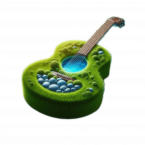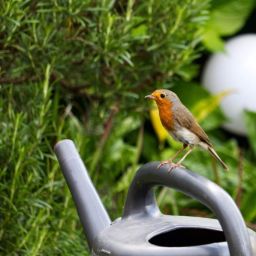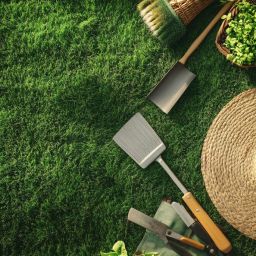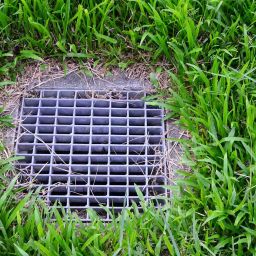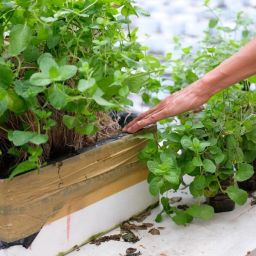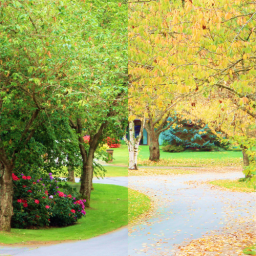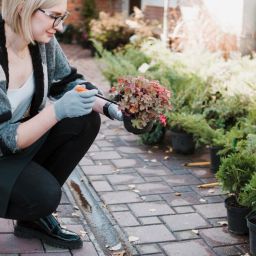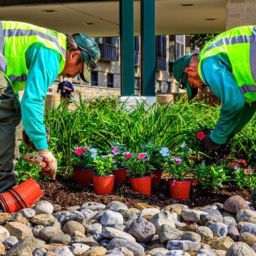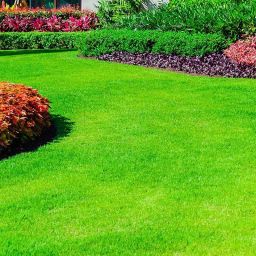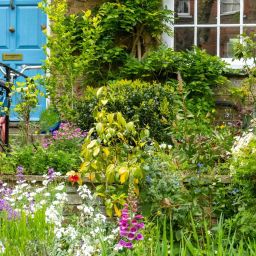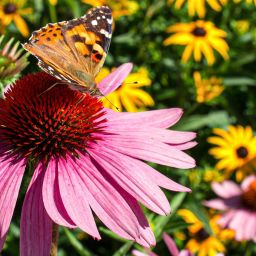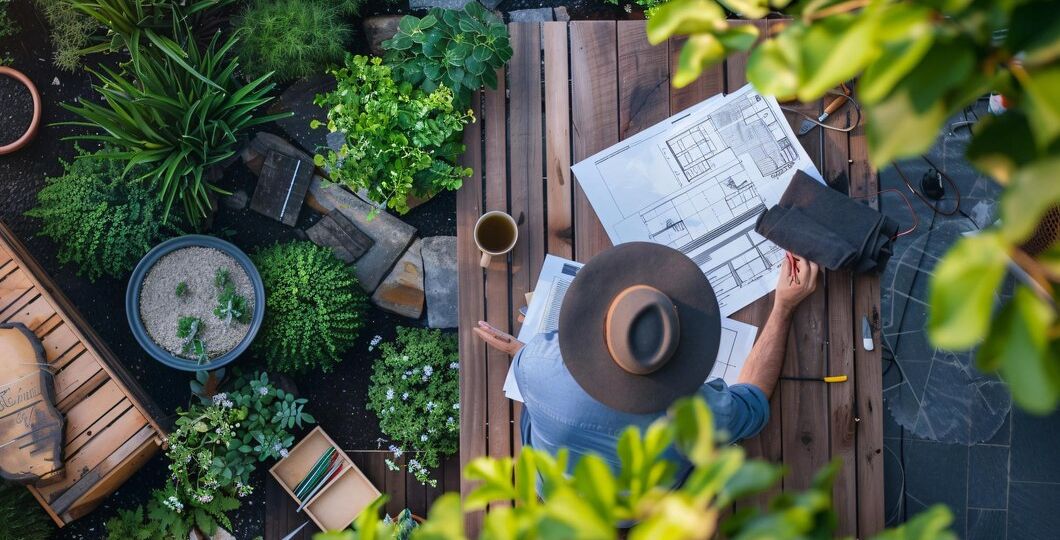
Designing a backyard in Nashville offers unique opportunities and challenges due to the region’s distinct climate, soil conditions, and lifestyle preferences. At Landscaping Nashville, we understand the intricacies of creating beautiful and functional outdoor spaces that reflect the character and needs of our clients. Whether you are looking to revamp your backyard with a fresh design or start from scratch, our expert tips will guide you in crafting an outdoor oasis that enhances your home’s curb appeal and provides a space for relaxation and enjoyment.
CONTACT US
Understanding Nashville’s Climate and Soil Conditions
Nashville’s climate is characterized by hot, humid summers and mild winters, which significantly impacts landscaping choices. The soil in Nashville can vary, often being clayey and prone to drainage issues. Understanding these conditions is crucial for selecting appropriate plants and designing features that thrive in this environment.
Climate Considerations
The hot and humid climate necessitates selecting plants that can withstand high temperatures and humidity. Considerations should include drought-resistant species and plants that can handle periods of heavy rain. Designing with climate in mind ensures that your landscape remains lush and healthy throughout the year.
Soil Conditions
Nashville’s clayey soil can be challenging for plant growth due to its poor drainage. Incorporating soil amendments, such as organic matter or sand, can improve soil structure and drainage. Raised beds or container gardening can also be effective solutions for dealing with challenging soil conditions.
Incorporating Native Plants for a Sustainable Garden
Native plants are well-suited to Nashville’s climate and soil conditions, making them an excellent choice for sustainable landscaping. They require less water, fertilizer, and maintenance compared to non-native species and provide vital support to local wildlife, including birds and pollinators.
Benefits of Native Plants
Native plants are adapted to the local environment, making them more resilient to pests and diseases. They also contribute to the ecological balance of your garden by providing habitat and food for native wildlife. Using native plants helps reduce the need for chemical treatments and supports biodiversity.
Selecting Native Species
When choosing native plants, consider those that are well-suited to your garden’s specific conditions, such as sun exposure and soil type. Popular native species for Nashville include coneflowers, black-eyed Susans, and oak trees. Consulting with a local nursery or landscaping expert can help you select the best options for your garden.
Designing Functional Outdoor Spaces: Patios, Decks, and Walkways
Creating functional outdoor spaces, such as patios, decks, and walkways, enhances the usability and aesthetic appeal of your backyard. These elements provide areas for relaxation, dining, and entertaining, making your outdoor space more versatile and enjoyable.
Patios and Decks
Patios and decks serve as focal points for outdoor living areas. Materials such as stone, pavers, or composite decking can be used to create durable and attractive surfaces. Consider incorporating features like built-in seating or outdoor kitchens to maximize functionality.
Walkways
Walkways connect different areas of your backyard and provide safe, accessible routes. Use materials such as flagstone, gravel, or brick to create visually appealing paths. Proper lighting and edging can enhance the walkways and ensure they are both practical and attractive.
Creating Shade and Shelter with Trees and Pergolas
Shade and shelter are essential for making outdoor spaces comfortable and usable throughout the year. Trees and pergolas offer protection from the sun and can create inviting areas for relaxation and entertaining.
Trees for Shade
Select tree species that provide ample shade and complement your landscape design. Shade trees, such as oak or maple, can help cool your backyard and create a more comfortable environment. Consider the mature size and root system of the tree to ensure it fits well within your design.
Pergolas and Structures
Pergolas and similar structures add architectural interest and provide shade for outdoor living areas. These can be designed with climbing plants or drapes to offer additional protection from the sun and create a cozy atmosphere.
Choosing Low-Maintenance Plants and Landscaping Materials
Low-maintenance plants and materials can save time and effort while keeping your garden looking its best. Opting for these options is especially beneficial for busy homeowners or those who prefer a more hands-off approach to gardening.
Low-Maintenance Plants
Choose plants that are drought-resistant, disease-resistant, and require minimal pruning or fertilizing. Examples include ornamental grasses, succulents, and certain shrubs. These plants can provide beauty and structure to your garden with minimal upkeep.
Low-Maintenance Materials
Select landscaping materials that are durable and require little maintenance. Options such as composite decking, stone pavers, and rubber mulch can reduce the need for frequent repairs or replacements, making your garden easier to manage.
Adding Color and Texture with Seasonal Flowers and Foliage
Incorporating seasonal flowers and foliage adds dynamic color and texture to your garden throughout the year. By selecting plants that offer a range of colors and textures, you can create visual interest and enhance the overall aesthetic of your backyard.
Seasonal Flowers
Choose flowers that bloom at different times of the year to ensure your garden remains colorful year-round. Annuals like petunias and marigolds provide vibrant color, while perennials such as daylilies and asters offer lasting beauty with minimal effort.
Foliage Plants
Foliage plants can add texture and interest even when flowers are not in bloom. Consider incorporating plants with variegated leaves, different leaf shapes, or seasonal color changes to enhance the visual appeal of your garden.
Integrating Water Features for Aesthetic Appeal and Relaxation
Water features such as fountains, ponds, and waterfalls can significantly enhance the aesthetic appeal of your garden while providing a relaxing atmosphere. The sound of flowing water can create a soothing backdrop for outdoor activities.
Types of Water Features
Choose from a variety of water features based on your garden’s size and style. Small fountains or birdbaths can add charm to a compact space, while larger ponds or waterfalls can serve as focal points in more extensive gardens. Ensure that the water feature you select complements the overall design and scale of your backyard.
Maintenance and Care
Proper maintenance is essential for keeping water features looking and functioning their best. Regular cleaning, checking for algae growth, and ensuring proper filtration can help maintain the water quality and overall appearance of the feature.
Implementing Outdoor Lighting to Enhance Evening Ambiance
Outdoor lighting extends the usability of your backyard into the evening hours and enhances the overall ambiance. Thoughtful lighting design can highlight key features, improve safety, and create a welcoming atmosphere.
Types of Outdoor Lighting
Consider incorporating various types of lighting, such as pathway lights, spotlights, and string lights. Pathway lights illuminate walkways and ensure safe navigation, while spotlights can highlight trees or architectural elements. String lights or lanterns add a festive and cozy feel to outdoor spaces.
Placement and Design
Strategically place lighting fixtures to enhance the beauty and functionality of your backyard. Avoid overly bright or harsh lighting by opting for softer, diffused options. Balance illumination with shadows to create a visually appealing and comfortable environment.
Building Functional Garden Beds and Raised Planters
Garden beds and raised planters provide practical solutions for growing plants and vegetables while improving the overall design of your backyard. These features can enhance accessibility and organization in your garden.
Garden Beds
Traditional garden beds allow for the cultivation of a variety of plants and can be customized to fit your garden’s layout. Raised garden beds offer improved drainage and soil quality, making them ideal for growing vegetables and herbs.
Raised Planters
Raised planters can be used to grow flowers, herbs, or vegetables and are especially useful for small spaces or areas with poor soil. They also provide easier access for planting and maintenance, reducing strain on your back and knees.
Incorporating Hardscaping Elements: Stone, Brick, and Gravel
Hardscaping elements such as stone, brick, and gravel add structure and durability to your landscape design. These materials can be used to create pathways, retaining walls, and decorative features that complement your garden.
Stone and Brick
Stone and brick are versatile materials that can be used for various hardscaping applications, including patios, walls, and borders. They offer a classic and enduring look, with options ranging from natural stone to engineered bricks.
Gravel and Other Materials
Gravel is an excellent choice for driveways, walkways, and decorative areas. It provides a low-maintenance surface that allows for proper drainage. Other materials such as decomposed granite or crushed limestone can also be used to create functional and attractive hardscaping features.
Planning for Year-Round Interest and Seasonal Changes
Designing your backyard to offer year-round interest involves selecting plants and features that change with the seasons. This approach ensures that your garden remains vibrant and engaging throughout the year.
Seasonal Planning
Incorporate a mix of seasonal plants, such as spring bulbs, summer perennials, autumn foliage, and winter evergreens. This variety will keep your garden looking fresh and dynamic across different seasons.
Year-Round Features
Consider adding features such as evergreen shrubs, ornamental grasses, and hardy ground covers to maintain visual interest during the colder months. Designing with year-round appeal in mind ensures that your backyard remains an inviting space regardless of the season.
Designing for Privacy and Screening: Fences and Hedges
Privacy and screening are essential elements of backyard design, providing both seclusion and protection from prying eyes. Fences and hedges can be used to create private retreats and enhance the overall security of your outdoor space.
Fences
Fences come in various materials, including wood, vinyl, and metal. Choose a style and height that complements your landscape design while providing the level of privacy you desire. Fences can also serve as a backdrop for climbing plants or decorative elements.
Hedges
Hedges offer a natural and attractive way to create privacy and define garden boundaries. Select evergreen varieties for year-round coverage or deciduous species for seasonal changes. Regular trimming and maintenance will keep hedges looking their best and ensure they serve their intended purpose.
Transforming Your Nashville Backyard into a Beautiful Oasis
At Landscaping Nashville, we are dedicated to helping you transform your backyard into a beautiful and functional oasis. Our expert team is ready to assist with every aspect of your landscape design, from understanding local conditions to incorporating the perfect elements for your space. Reach out to us today to start your journey toward creating a stunning outdoor environment tailored to your needs and preferences. Contact us to schedule a consultation and take the first step toward enhancing your Nashville backyard.
FAQs
What are the key factors to consider when designing a backyard landscape in Nashville? Consider the size and shape of your yard, the amount of sunlight it receives, your desired aesthetic, and your budget.
How can I create a low-maintenance backyard landscape in Nashville? Choose drought-tolerant plants, use mulch to retain moisture, and consider hardscape features like patios or walkways.
What are some popular landscaping styles for Nashville backyards? Consider traditional Southern, modern, or tropical styles, depending on your personal preferences.
How can I incorporate native plants into my Nashville backyard landscape? Native plants are well-suited to the local climate and can attract pollinators. Research native plants that thrive in Nashville.
What are some creative ideas for landscaping a small backyard in Nashville? Consider vertical gardens, container gardening, or a minimalist design to maximize space.
How can I add privacy to my Nashville backyard? Plant privacy hedges, install a fence, or use trellises with climbing plants.
What are some water-saving landscaping techniques for Nashville? Install a drip irrigation system, collect rainwater, and choose drought-tolerant plants.
How can I incorporate outdoor living spaces into my Nashville backyard? Create a patio, deck, or gazebo for entertaining or relaxing. Add comfortable seating, outdoor lighting, and landscaping features like fire pits or water features.
How can I improve the curb appeal of my Nashville backyard? Focus on the entrance, creating a welcoming pathway and adding landscaping elements like flower beds or shrubs.
What are some tips for maintaining a beautiful backyard landscape in Nashville? Regular watering, pruning, and weeding are essential. Consider hiring a professional landscaping service for ongoing maintenance.
